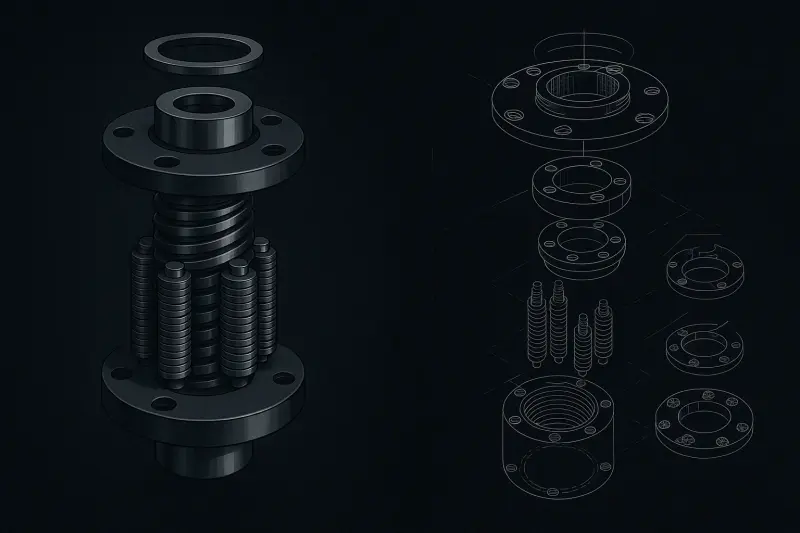- Published on
Actuator Architecture Sparks Debate: Figure CEO Refutes Claim of Using Planetary Roller Screws
- Authors

- Name
- The Editorial Team
- @humanoidsdaily

TL;DR: A Fast Company article claiming planetary roller screws (PRS) are powering the humanoid robot revolution drew swift criticism from Figure AI CEO Brett Adcock, who denied his company uses them. The pushback highlights a key industry divide: rotary vs. linear actuators. Experts like Scott Walter explain that Figure, Agility, and 1X favor rotary systems for simplicity and control, while others like Apptronik and XPeng use linear actuators — likely incorporating PRS — to enable more compact limb designs.
Figure CEO Disputes Fast Company Claim on Planetary Roller Screws, Highlighting Humanoid Actuator Debate
A recent article by Fast Company highlighting the importance of planetary roller screws (PRS) in humanoid robot development sparked immediate pushback from Figure AI CEO Brett Adcock, revealing a key design divergence within the industry.
The Fast Company piece, titled "This tiny screw is powering the humanoid robot revolution," positioned PRS as a critical next-generation component, citing their high load capacity and durability. It claimed several leading humanoid developers, including Tesla, Figure AI, Agility Robotics, and 1X Technologies, utilize these screws, which convert rotational motor motion into linear motion.
Insane that Fast Company posted this article. Mentions Figure is using this, and it's completely not true. The screw they mention is used for linear actuators, which are likely not used for the majority of all humanoid players.
However, Figure CEO Brett Adcock swiftly contested the article's accuracy regarding his company. "Insane that Fast Company posted this article," Adcock tweeted. "Mentions Figure is using this, and it's completely not true. The screw they mention is used for linear actuators, which are likely not used for the majority of all humanoid players." Adcock implied Figure primarily uses rotary actuators.
Scott Walter, a robot design expert quoted in the original Fast Company article and Chief Technical Advisor for Visual Components, provided further context in a detailed X thread. Walter confirmed that the debate over the best actuation strategy for humanoids is far from settled, describing it as having "two main camps, at polar opposites to one another."
Walter categorized companies like Figure, Boston Dynamics, Agility, and 1X as primarily using rotary actuators, where the motor directly drives the joint's rotation. Conversely, he placed Apptronik's Apollo and XPeng's robot in the camp favoring linear actuators (which often employ PRS or similar mechanisms) connected to joints via linkages. Tesla's Optimus and NEURA's 4NE-1 represent a hybrid approach, using a mix of both.
While acknowledging the theoretical efficiency of direct rotary actuation for naturally rotating joints, Walter explained the engineering trade-offs. Rotary actuators can become bulky, especially for high-torque joints like wrists and ankles. Linear actuators allow for remote actuation – placing the actuator further away (e.g., in the forearm or calf) and using linkages to move the joint. This can result in slender wrists and ankles, as seen in designs like Tesla's Optimus, but introduces mechanical complexity (e.g., 3- or 4-bar linkages) and potential control challenges.
Walter noted that despite the packaging challenges, companies like Figure have successfully implemented rotary actuators even in demanding locations like the ankle. He also suggested that the kinematic complexity associated with linear actuator linkages might pose difficulties for simulation and reinforcement learning (RL) training, potentially explaining why some companies favoring this approach have shown slower progress in dynamic locomotion.
Ultimately, Walter concluded, "The jury is still out" on whether linear or rotary actuators (and by extension, the need for PRS) will dominate. Durability remains a key question for all designs. While PRS are essential for certain high-performance linear actuation needs, their widespread necessity across all humanoids is debatable and depends heavily on the chosen design philosophy – a choice that significantly impacts robot cost, performance, and complexity.
The original article by Fast Company can be read here.
Read Brett Adcocks tweet.
Read the thread by Scott Walter here.